Electric Alley Renaming reminds us that Domestic Electricity is a Relatively New Innovation
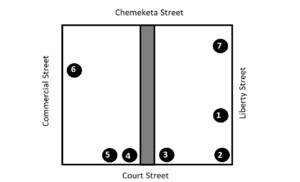
Electric Alley as it now stands in Salem, Oregon. Numbered buildings relate to various businesses and buildings with an “electric” past.
I don’t know about you, but I have been particularly thankful this past week, hunkered down at home, for the convenience of electricity. It is almost unfathomable to me that the electric devices I rely on everyday in my house (refrigerator, range, iron, even the radio) were considered cutting edge technology and luxury conveniences for many just a century ago. Although electric streetlights buzzed to life in Salem in 1886, and electric lighting soon after found its way into the average home, other electric conveniences were slower to catch on, in large part because of the slow development of standard outlets and plugs[1] and the initial outlay needed to wire up the modern house.
Last year, the Salem Main Street Association started the Salem Alley Days and conducted a citizen vote to name Salem’s alleys based on local landmarks and history. The alley on the block surrounded by Court, Chemeketa, Commercial and Liberty Streets was duly named Electric Alley, mostly for its proximity to the PGE Building[2] which housed the offices of the local power company for many years and was the site of the aptly named “Electric Apartments.” A further study of the history of the block shows a wide variety of businesses that both utilized electric apparatus to provide better service to customers and which helped in the electrification of the average household in Salem.
1) PGE Building[3] (241 Liberty Street) – Building now home to Kraftworks Tap House[4]
Built in 1917, this building was first occupied by the Portland Railway, Light & Power Company, a predecessor to the building’s namesake (PGE – or Portland General Electric). The first floor housed the main offices and showroom of the company. The second floor was known as the Electric Apartments with six spacious apartments, each wired with their own electric door openers![5] In addition to selling power, the Portland Railway, Light & Power Company also actively sold and promoted new electric equipment in their showroom through demonstrations and even cooking classes. They wouldn’t just sell you the equipment, they would show you how to work it, too! The Portland Power, Railway and Light Company would become the Portland Electric and Power Company (PEPCO) and eventually Portland General Electric (PGE) before they moved their offices out of the building in 1949.[6]
2) Steusloff Meat Market (399 Court Street)
It has had a few facelifts over the years masking its 1902 origins, but the building at the northwest corner of Court and Liberty Streets started out as a meat market. Underground along the Liberty Street sidewalk (according to the 1926 Sanborn Fire Insurance map) were an electric ice machine and sausage making machine, just two of the up-to-date and modern conveniences utilized to provide a wide array of meat products to Salem customers.
3) Giese Powers Furniture Co. (357-355 Court Street) – now home to Lullu’s Tutto Cucina and Frontier Barber Co.
You might remember this name from the goose mural that still shines (after restoration) on the west side of the building in the alleyway. The goose was the clever logo of the eponymously named Giese-Powers Furniture Company that occupied this location during the 1920s.[7] Furniture stores like Giese Powers and department stores like the Montgomery Ward (which occupied a no longer standing building on the NW corner of this block from 1928-1937[8]) were where most people went to purchase new electric appliances for their homes. Giese-Powers offered a wide assortment of electrical appliances for household use including floor lamps, electric toasters, grills, and vacuum sweepers.[9]
4) Court Street Dairy Lunch (347 Court St)
When the Court Street Dairy Lunch opened up their new location at 347 Court Street in 1936, their advertisements announced: “This is an Automatic Electrical Restaurant Completely Equipped with Modern Electrical Appliances Throughout.”[10] Brand new modern appliances included electric coffee percolators and dishwasher and a fan that allowed the ”air of the restaurant [to be] effectively changed every three minutes.”[11]
5) Halik’s Electric Shop (399 Court Street) — building Great Harvest now occupies[12]
Frank E. Halik operated his shop at this location during the 1920s and early 1930s.[13] He specialized in wiring and repairs and sold a wide variety of electric appliances like washing machines and radios.[14] As one advertisement announced: “We do house wiring and carry a complete stock of fixtures. Instrument repairing, experimental work. Electric appliances repaired.”[15]
6)Better-Yet Bakery (264 Commercial Street) — building no longer there replaced by Chemeketa Parkade.
Another interesting electric feature on the 1926 Sanborn Fire Insurance Map shows a rectangle labelled “electric oven” in the back of a long narrow building. Advertisements place the Betty-Yet Bakery at this address at this time offering “Pies, Cakes, Doughnuts, Bread, in fact everything in the bakery line.” You could pick it up at the store or find it in your local grocery store.[16]
To learn more about Salem’s alleys and the naming project please visit the Salem Main Street Association website: https://www.salemmainstreetassociation.org/salem-alley-days/.
The Willamette Heritage Center is shut for now, but we haven’t stopped working to connect generations with our local heritage. If you are stuck at home, have a laptop and some spare time, we’ve pulled together a variety of online resources to help you stay connected with local history. Stroll through a virtual “History Pin” tour, take a class on online research, find lesson plans, or listen to an interview with Mid-Valley residents. Visit https://www.willametteheritage.org/social-distancing-learning-resources/.
See more photos:
This article first appeared in the Statesman Journal in Spring 2021. It is reproduced here with citations and more information for reference purposes.
CITATIONS
[1] For more information on the development of standard AC electrical sockets, check out this Wikipedia article: https://en.wikipedia.org/wiki/History_of_AC_power_plugs_and_sockets#Early_history.
[2] While today this building is called the PGE building, this is an anachronism. When it was first built it was referred to as the “Electric Building.” See Oregon Historic Sites Database. for current nomenclature. See, however, the article here for original name: “Steusloff Building will be Two Stories.” Capital Journal 12 June 1917 pg 3 accessed through Chronicaling America..
[3] While today this building is called the PGE building, this is an anachronism. When it was first built it was referred to as the “Electric Building.” See Oregon Historic Sites Database. for current nomenclature. See, however, the article here for original name: “Steusloff Building will be Two Stories.” Capital Journal 12 June 1917 pg 3 accessed through Chronicaling America..
[4] This is the current address and name ascribed to the building in the Oregon State Historic Preservation Office’s Oregon Historic Sites Database. Please note that early Sanborn maps (see 1926 edition), supported by newspaper and city directory evidence ascribe the following street addresses to this building: 237 Liberty, 241 Liberty, 233 Liberty and 245 Liberty.
[5] See appearance of the building in the 1917 Polk’s City Directory for the City of Salem. It should be noted that the offices of the Portland Railway and Light Company were described with address of 237 Liberty, while the Electric Apartments upstairs were given the mailing address of 241 Liberty. his is the current address and name ascribed to the building in the Oregon State Historic Preservation Office’s Oregon Historic Sites Database. Please note that early Sanborn maps (see 1926 edition), supported by newspaper and city directory evidence ascribe the following street addresses to this building: 237 Liberty, 241 Liberty, 233 Liberty and 245 Liberty. Both were in the same building. Description given in the article “PGE to move offices to PAcific Building, South High.” Capital Journal 20 June 1949 pg 1; and articles for opening reception in the Oregon Statesman 21 Sept 1917 pg 8; and article “Cakes Baked at Reception” Oregon Statesman 23 Sep 1917 pg 3. Should be noted that City Directories show other facilities throughout the city. Also see ”Steusloff Building will be Two Stories.” Capital Journal 12 June 1917 pg 3 accessed through Chronicling America.for reference to first floor.
[6] “PGE to Move Offices to Pacific Building, South HIgh.” Capital Journal 20 Jun 1949 pg 1.
[7] Giese appears to have gone into business for himself in about 1921 (see ”Salem Fortunate in Having High Class and Attractive Furniture Store Available.” Oregon Statesman 21 Dec 1924, pg 15). He contracted with a Portland-based furniture firm in about 1923 and renamed company Giese Powers (Asee Advert 22 Sept 1923 pg 6). Going out of business advertisements indicate that the store closed about 1930 (see Advetisement Capital Journal 14 Aug 1930 pg 7.)
[8] Montgomery Ward Moves to 275 N. Liberty – ”New Store Located at 275 N. Liberty Street.” Capital Journal. 9 Aug 1928 pg 7; New Montgomery Ward Store being built at 100 Block of Liberty Street to be completed early this year. ”Business Area Buildings Rise” Oregon Statesman 1 Jan 1937 pg 21; Reference to address at 165 Liberty. Capital Journal 17 Feb 1937 pg 9; Announcement of Gevurtz Furniture opening in former Ward’s building. Advertisement. Oregon Statesman 26 Sept 1937 pg 5.
[9] List of merchandise found in Christmas Advertisement. Capital Journal Friday, November 28, 1924.
[10] Advertisement. Capital Journal. 1 June 1936, pg 7.
[11] ”Court Street Dairy Lunch Open for Business” Capital Journal 1 June 1936 pg 7. Accessed via newspapers.com
[12] he address used by the shop in all of its advertising was 337 Court Street. The 1926 Sanborn Map shows two addresses at this location — 337 and 339. 339 Court Street the present site (2020) of Great Harvest Bread is listed in the Historic Sites database as the nright-Halik Building (https://heritagedata.prd.state.or.us/historic/index.cfm?do=v.dsp_siteSummary&resultDisplay=46361) further confirming that this is the site of the Halik Electric Shop.
[13] First newspaper reference we could find was in a listing for properties purchased by the count 29 March 1922 Capital Journal Accessed via Chronicling America. Advertisements regular until December 6 1931. Article 31 October 1933 Capital Journal “Notice of Assignee’s Sale” and Capital Journal 04 Nov 1933 pg 7 about an involuntary petition of bankruptcy.” suggests the end of the road for the company.
[14] Advert for Woodrow Washer Capital Journal 18 Dec 1923 pg 8. Advert Oregon Statesman 6 Dec 1931 pg 5 for a GE Junior Radio.
[15] Advertisement. Oregon Statesman 24 Oct 1922 pg 9.
[16] Advertisement. Oregon Statesman 15 June 1926 pg 4.



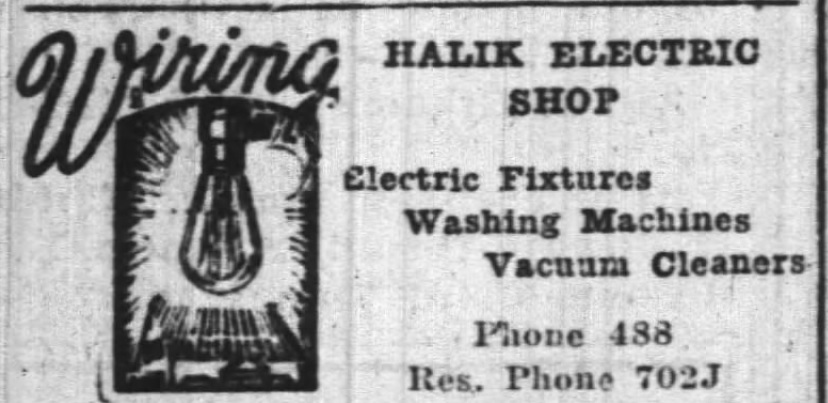
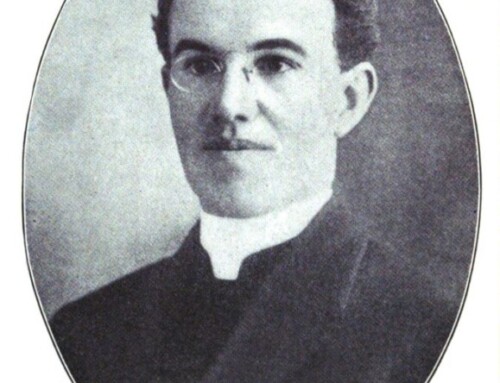
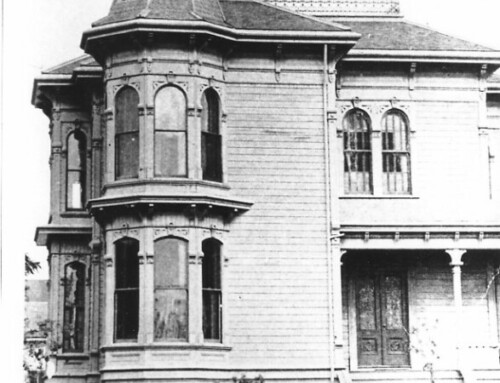
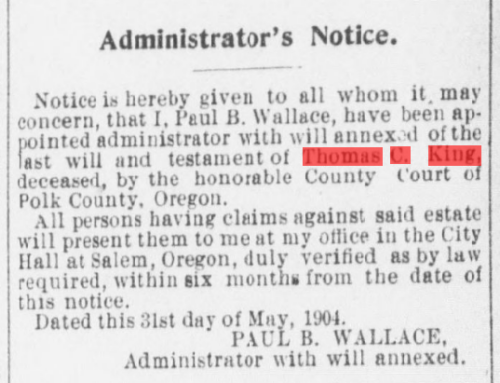
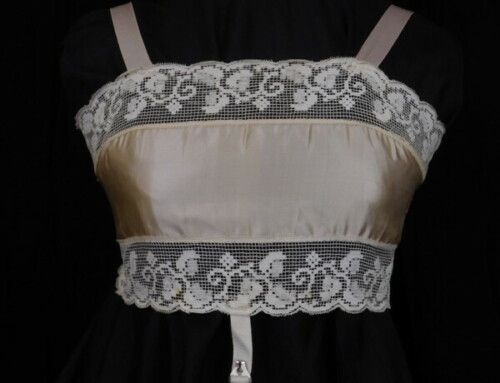
Leave A Comment